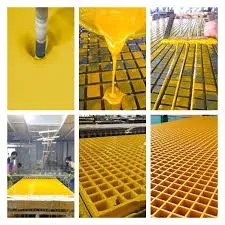
-
 Afrikaans
Afrikaans -
 Albanian
Albanian -
 Amharic
Amharic -
 Arabic
Arabic -
 Armenian
Armenian -
 Azerbaijani
Azerbaijani -
 Basque
Basque -
 Belarusian
Belarusian -
 Bengali
Bengali -
 Bosnian
Bosnian -
 Bulgarian
Bulgarian -
 Catalan
Catalan -
 Cebuano
Cebuano -
 China
China -
 China (Taiwan)
China (Taiwan) -
 Corsican
Corsican -
 Croatian
Croatian -
 Czech
Czech -
 Danish
Danish -
 Dutch
Dutch -
 English
English -
 Esperanto
Esperanto -
 Estonian
Estonian -
 Finnish
Finnish -
 French
French -
 Frisian
Frisian -
 Galician
Galician -
 Georgian
Georgian -
 German
German -
 Greek
Greek -
 Gujarati
Gujarati -
 Haitian Creole
Haitian Creole -
 hausa
hausa -
 hawaiian
hawaiian -
 Hebrew
Hebrew -
 Hindi
Hindi -
 Miao
Miao -
 Hungarian
Hungarian -
 Icelandic
Icelandic -
 igbo
igbo -
 Indonesian
Indonesian -
 irish
irish -
 Italian
Italian -
 Japanese
Japanese -
 Javanese
Javanese -
 Kannada
Kannada -
 kazakh
kazakh -
 Khmer
Khmer -
 Rwandese
Rwandese -
 Korean
Korean -
 Kurdish
Kurdish -
 Kyrgyz
Kyrgyz -
 Lao
Lao -
 Latin
Latin -
 Latvian
Latvian -
 Lithuanian
Lithuanian -
 Luxembourgish
Luxembourgish -
 Macedonian
Macedonian -
 Malgashi
Malgashi -
 Malay
Malay -
 Malayalam
Malayalam -
 Maltese
Maltese -
 Maori
Maori -
 Marathi
Marathi -
 Mongolian
Mongolian -
 Myanmar
Myanmar -
 Nepali
Nepali -
 Norwegian
Norwegian -
 Norwegian
Norwegian -
 Occitan
Occitan -
 Pashto
Pashto -
 Persian
Persian -
 Polish
Polish -
 Portuguese
Portuguese -
 Punjabi
Punjabi -
 Romanian
Romanian -
 Russian
Russian -
 Samoan
Samoan -
 Scottish Gaelic
Scottish Gaelic -
 Serbian
Serbian -
 Sesotho
Sesotho -
 Shona
Shona -
 Sindhi
Sindhi -
 Sinhala
Sinhala -
 Slovak
Slovak -
 Slovenian
Slovenian -
 Somali
Somali -
 Spanish
Spanish -
 Sundanese
Sundanese -
 Swahili
Swahili -
 Swedish
Swedish -
 Tagalog
Tagalog -
 Tajik
Tajik -
 Tamil
Tamil -
 Tatar
Tatar -
 Telugu
Telugu -
 Thai
Thai -
 Turkish
Turkish -
 Turkmen
Turkmen -
 Ukrainian
Ukrainian -
 Urdu
Urdu -
 Uighur
Uighur -
 Uzbek
Uzbek -
 Vietnamese
Vietnamese -
 Welsh
Welsh -
 Bantu
Bantu -
 Yiddish
Yiddish -
 Yoruba
Yoruba -
 Zulu
Zulu
Creating a New Inspired by Mandrel for Your Project
Understanding the Mandrel Its Role and Applications in Manufacturing
In the realm of manufacturing and engineering, various tools and components facilitate the creation of high-quality products. One such indispensable tool is the mandrel. Often overlooked, the mandrel plays a pivotal role in ensuring precision, efficiency, and effectiveness in various production processes. This article delves into the definition, types, functions, and applications of mandrels to illustrate their significance in modern manufacturing.
What is a Mandrel?
In simpler terms, a mandrel is a device used to support and shape workpieces during machining processes. It serves as a core around which materials can be formed, shaped, or manipulated. Typically cylindrical, mandrels are designed to fit snugly inside or against a specific workpiece, allowing for precise operations. They are often made from robust materials like steel or aluminum to withstand the forces encountered during manufacturing.
Types of Mandrels
Mandrels come in various forms tailored to specific applications. The most common types include
1. Solid Mandrels These are made from a single piece of material and are used primarily for internal workpiece support. Their strength and rigidity make them ideal for heavy-duty machining tasks.
2. Expandable Mandrels Also known as adjustable or inflatable mandrels, these can be expanded and contracted to accommodate different workpiece sizes. This flexibility is particularly advantageous in operations involving multiple workpieces of varying dimensions.
3. Tapered Mandrels With a tapered design, these mandrels are used to secure workpieces by wedging them tightly. Tapered mandrels are often utilized in finishing operations where high accuracy is required.
4. Collapsible Mandrels These employ a mechanism that allows the mandrel to collapse once the workpiece has been machined, making extraction easier. This design is useful for complex shapes or delicate materials that could be damaged during removal.
Functions of a Mandrel
Mandrels serve several essential functions in manufacturing
mandrel

1. Support and Stability One of the primary roles of a mandrel is to provide adequate support for workpieces, especially during turning and milling operations. By ensuring stability, mandrels minimize vibrations that could affect the machining process and the final product's quality.
2. Shaping and Forming Mandrels allow for the precise shaping of materials. For instance, when bending metal tubing, a mandrel can be inserted into the tube to prevent deformation and achieve the desired curvature.
3. Improving Efficiency By using mandrels, manufacturers can streamline processes, reducing cycle times and improving overall productivity. Mandrels enable quick changes between operations, accommodating various tasks without extensive retooling.
4. Ensuring Precision The accurate placement of mandrels can significantly enhance the precision of machining operations. Consistent fixturing leads to better tolerances and improved quality control.
Applications of Mandrels
The applications of mandrels are vast and varied across different industries, including
- Aerospace In the aerospace sector, mandrels are used for forming components such as ducts and fairings, where precise shaping is critical to performance and safety.
- Automotive Mandrels facilitate the production of exhaust systems and other tubular components, ensuring that parts can be manufactured efficiently while maintaining high standards.
- Manufacturing General manufacturing processes, such as the machining of parts for machinery and equipment, heavily rely on mandrels to achieve the desired specifications.
- Textiles In textile manufacturing, mandrels are used for winding threads and fabrics, ensuring that the materials remain tight and uniformly spaced.
Conclusion
In summary, mandrels are an essential tool in manufacturing, influencing the quality and efficiency of various processes. Understanding the different types and their functions can help industry professionals select the right mandrel for their specific applications, ultimately leading to enhanced productivity and superior products. As technology continues to evolve, the design and usage of mandrels are likely to advance further, solidifying their place as a crucial component in the manufacturing landscape.









